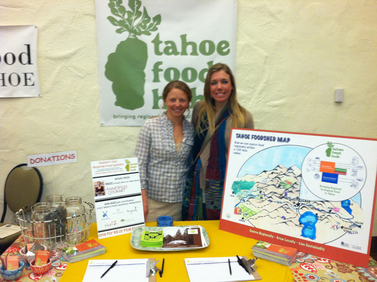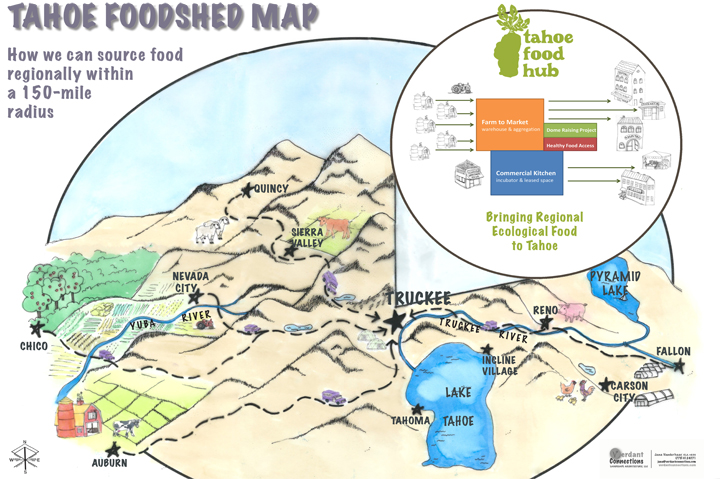
The drawing is definitely Richard Scarry inspired. In fact, some of the buildings are actual structures found in the books. Like many, Richard Scarry drawings captured my attention for hours as a kid teaching me about how the world works and interacts. And when looking for the best way to help conceptualize the Tahoe Foodshed, I knew exactly where to turn.
A foodshed is often compared to a watershed because they usually share the same footprint....food grows where water flows! A watershed represents where a community gets its water. Likewise, a foodshed represents the local area where a community sources its food. In the map, you'll see how the Truckee and Yuba Rivers lead Tahoe to its regional food sources. Key components of a foodshed include productive farmland, food distribution, waste disposal, processing facilities as well as food wholesalers and retailers. For non-food producing areas like North Lake Tahoe, a foodshed creates partnerships with food abundant neighbors who grow food year-round within 150-miles.
The goal of the map is to visually represent the role of the Tahoe Food Hub by putting it in relation to its foodshed. The map distills the efforts of a formal foodshed assessment which compares the food needs of a community with its food production capabilities. Foodshed assessments also display the social, economic and environmental benefits of consuming food within that foodshed. A foodshed assessment for North Lake Tahoe evaluates the potential to feed the North Lake Tahoe area from ecological growers within a 150-mile range of Truckee, CA both stimulating the economies of surrounding communities and increasing Tahoe’s food security and access to healthier, sustainably-grown food.
If every community evaluated the bio-capacity of its foodshed to source as much food regionally and rely less on the national food system...we would increase food security, create more equitable food policy, and see the benefits that sustainable farming methods can have on our health, economy and environment. We don't have to be so far removed from our food. Understanding our foodshed brings us closer so we can make better decisions about where our food comes from so we can still have our coffee and chocolate but without trucking things like eggs, milk and greens which can be produced locally year-round. Feed the world one community at a time!


 RSS Feed
RSS Feed
